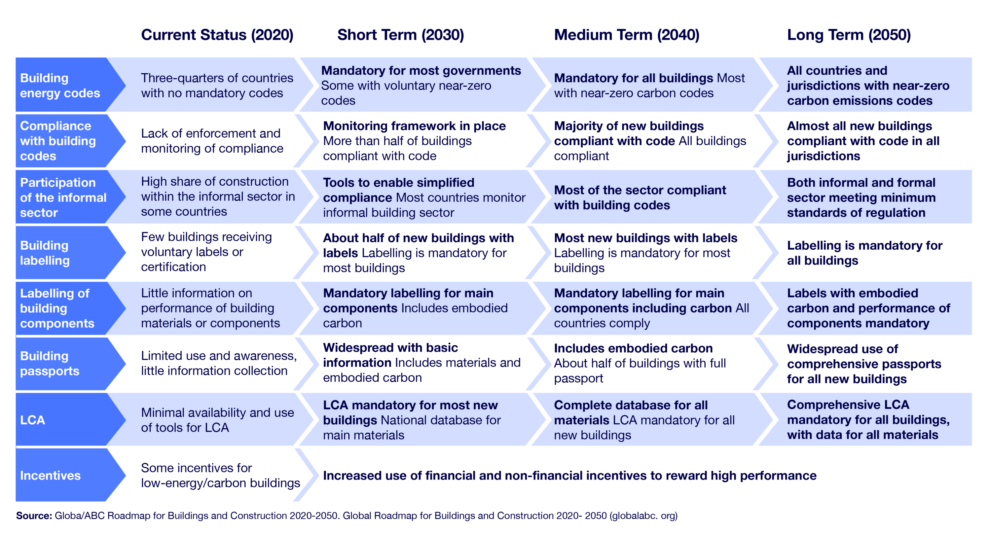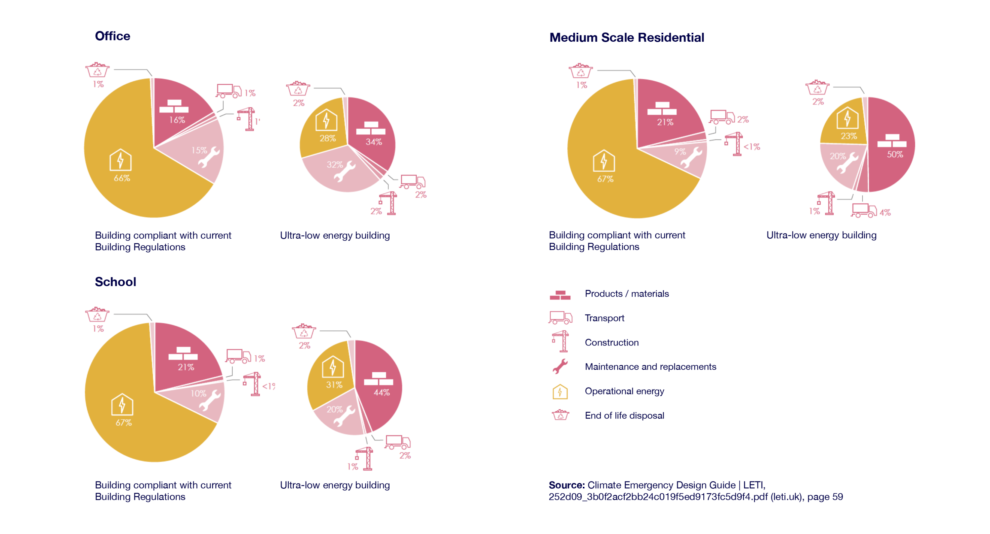<script type="text/javascript"> _linkedin_partner_id = "6415570"; window._linkedin_data_partner_ids = window._linkedin_data_partner_ids || []; window._linkedin_data_partner_ids.push(_linkedin_partner_id); </script><script type="text/javascript"> (function(l) { if (!l){window.lintrk = function(a,b){window.lintrk.q.push([a,b])}; window.lintrk.q=[]} var s = document.getElementsByTagName("script")[0]; var b = document.createElement("script"); b.type = "text/javascript";b.async = true; b.src = "https://snap.licdn.com/li.lms-analytics/insight.min.js"; s.parentNode.insertBefore(b, s);})(window.lintrk); </script> <noscript> <img height="1" width="1" style="display:none;" alt="" src="
×The EU Taxonomy was created under the European Green Deal with the aim to direct money towards sustainable projects to make our economies, businesses, and societies resilient against climate and environmental shocks. Within the construction and real-estate sector, this classification system enables companies to identify environmentally sustainable economic projects and investments by creating a shared understanding of green economic activities and preventing involuntary greenwashing of practices.
Whilst the EU Taxonomy has been in place since 2020, in January 2023, it became mandatory for an estimated 11,000 companies covered under the non-financial reporting directive (NFRD). These are large companies and financial institutions with more than 500 employees and a balance sheet of more than 20 million Euros or a turnover of more than 40 million Euros. The EU plans to cast this net wider again. In 2025 the EU Taxonomy will be applied to large companies under the Corporate Social Reporting Directive (CSRD) with 250+ employees, 20 million euros or with a turnover of more than 40 million euros. Listed SMEs may also be subject to the taxonomy in 2026, estimated to impact 50,000 additional companies.
The EU Taxonomy framework’s classification system for the ‘Construction of New Buildings’ provides a standardised sustainable framework for all new developments within the 27 EU member countries to achieve net zero by 2050. The framework enables investors to have a robust classification system to re-orient their investments towards more sustainable technologies and enterprises in line with ESG. Businesses also benefit from access to new funding sources through global capital markets and the financial sector worldwide.
As the world’s first system created to classify environmentally sustainable activities, creating a common definition of sustainable economic activities, the EU Taxonomy will play a vital role in upscaling sustainable development to achieve 2050 targets. However, it is important to note that the EU Taxonomy reflects the minimum standard of sustainable activities required by companies to achieve.
True sustainability must consider all aspects of a building’s impact on the environment. Below shows a drawdown elaborated by the Global Alliance for Buildings and Construction:
To move beyond the minimum requirements of the EU Taxonomy and create truly sustainable buildings we need to look at the building’s whole life carbon design (construction and operation).
Embodied carbon in the construction industry represents around 35% of a building’s whole life carbon. This means that operational energy is the number 1 factor for the construction’s industry GHG emissions. However, as we progress toward a more energy-efficient construction industry, building materials’ embodied carbon will begin to make up for more of the pie.
In essence, we ought to choose our construction materials carefully as they will be stocked in a building for a long time.
From the outset, sustainability must become a fundamental priority for new developments to strategically inform how all aspects of design progress and come together. One example of how this can be done is through the prioritisation of passive design principles. These include natural ventilation and daylight, supplementing these with low-energy mechanical and electrical systems and applicable renewable technologies throughout the development.
Whilst the industry is becoming more aware of how the construction process for new buildings and their impact on the planet this doesn’t stop with new buildings. There is also mounting pressure on existing buildings to adapt, to meet these new sustainability standards.
Decarbonisation and retrofit of existing buildings are crucial to achieving 2050 Net Zero targets, reinvigorating and extending the life of older structures. Retrofitting looks to transform and reuse spaces that would otherwise be unfit for purpose and require demolition. By upgrading existing building systems and incorporating new technologies, these buildings can continue to provide value for decades to come.
In addition to the environmental benefits of upgrading existing buildings, these can also be commercially and socially beneficial, which can be attractive to companies wanting to incorporate ESG policies. Retrofits can be more cost-effective than the demolition and subsequent construction of a new building. Whilst the retention of existing structures allows people to continue enjoying much-loved historical and cultural buildings embedded within communities.
Industry-recognised assessment methods can provide sustainable benchmarks for building new and old, helping to maximise the development’s value and well-being for the people within them. Key sustainable accreditations we view as offering the most benefit and prestige for projects include the likes of LEED, BREEAM, WELL and DGNB.


